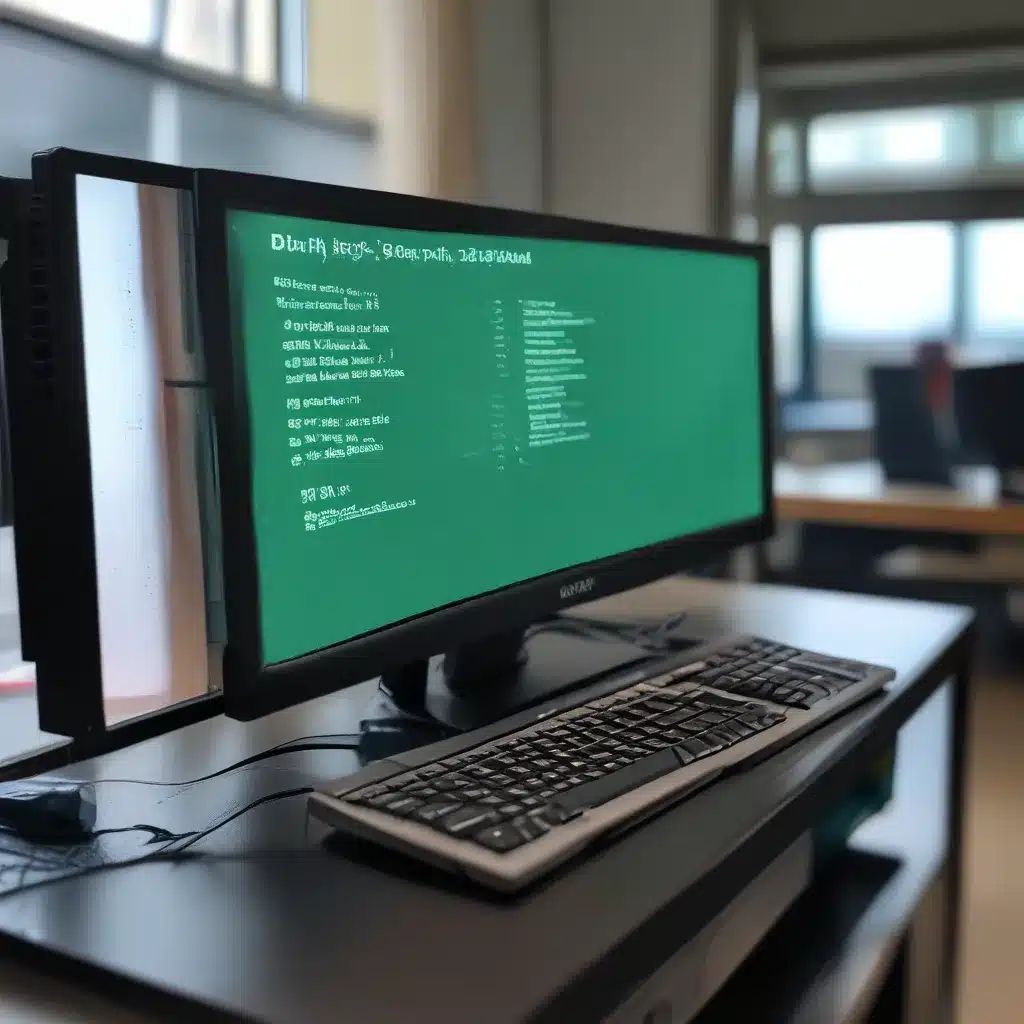Seeing Red (and Orange and Blurry)
As the owner of a computer repair service in the UK, I’ve seen my fair share of display-related issues. From the dreaded “orange screen” to the ever-frustrating “blurry text,” these problems have a way of bringing even the most tech-savvy individuals to their knees. But fear not, my fellow tech-challenged comrades! Today, I’m here to guide you through the maze of display dilemmas, armed with a healthy dose of humor and a dash of personal experience.
Let’s start with a classic: the infamous “orange screen.” You know the one – you’re trying to watch the latest true-crime documentary, and suddenly, the screen transforms into a fiery inferno of tangerine tones. “What sorcery is this?” you might exclaim, as you frantically press every button on the keyboard, hoping to restore your screen to its former glory. Well, my friends, the culprit is often a simple matter of color order.
As one of our fellow tech enthusiasts discovered, the key to conquering the orange screen is to check the “Color Order” option. By switching it from BGR to RGB, you can restore the natural hues to your display, allowing you to continue your binge-watching uninterrupted.
But the display dilemmas don’t end there. Oh no, my friends. Sometimes, the issue lies in the resolution, as our friend from the Renesas community discovered. Imagine trying to view a 480×272 image on an 800×480 screen – it’s like trying to fit a square peg into a round hole. The result? A display that repeats the image vertically, leaving you scratching your head and wondering, “What sorcery is this?”
Thankfully, the solution is as simple as adjusting the vertical active video lines. By increasing the range from 272 to 480, you can stretch the image to fill the screen, restoring the proper proportions and saving you from a display-related headache.
The Blurry Battlefield
But the display demons don’t stop there. Oh no, they’ve got one more trick up their sleeve: the dreaded “blurry text.” Imagine trying to read an article on our website, only to be greeted with a sea of fuzzy, indistinct characters. It’s enough to make even the most patient among us want to throw the computer out the window.
As our friends in the Gramps community discovered, the culprit is often a matter of high-DPI scaling. When your operating system tries to compensate for a high-resolution display, it can result in a blurry, pixelated mess. But fear not, for there is a solution!
By heading to the compatibility settings of the offending program and selecting the “override scaling behavior” option, you can force the application to use its own scaling methods, ensuring that your text remains crisp and clear. It’s a little trick that can save you from a world of display-related woes.
Conquer the Display Demons
So, there you have it, my fellow tech-challenged comrades. From the orange screen to the blurry text, we’ve tackled the display demons head-on, armed with a healthy dose of humor and a dash of technical know-how. Remember, when it comes to resolving display problems, the key is to approach each issue with a curious and playful mindset. After all, where’s the fun in being a tech wizard if you can’t enjoy a few laughs along the way?
And if all else fails, don’t hesitate to reach out to the experts at ITFix. We’re always here to lend a helping hand and share a few tech-related anecdotes. So, let’s conquer those display demons together, one orange screen and blurry text at a time!













